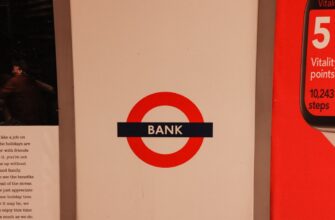- Bitcoin SV Halving Countdown: The Clock is Ticking
- Understanding the Bitcoin SV Halving Mechanism
- The Current Bitcoin SV Halving Countdown
- Historical Context: Past Bitcoin SV Halvings
- Potential Impacts of the Upcoming Bitcoin SV Halving
- Preparing for the Bitcoin SV Halving
- Bitcoin SV Halving Countdown FAQ
- The Final Countdown: A Defining Moment for BSV
Bitcoin SV Halving Countdown: The Clock is Ticking
The Bitcoin SV (BSV) halving countdown is officially underway, marking a pivotal moment for the network and its community. Occurring roughly every four years, this pre-programmed event slashes the block reward miners receive in half, fundamentally altering BSV’s supply dynamics. With the next halving estimated for April 2024, anticipation is building. This guide breaks down the Bitcoin SV halving countdown, its historical context, potential impacts, and why it matters for miners, investors, and the broader ecosystem.
Understanding the Bitcoin SV Halving Mechanism
Bitcoin SV, adhering closely to Satoshi Nakamoto’s original Bitcoin protocol outlined in the 2008 whitepaper, incorporates a fixed monetary policy. Key to this policy is the “halving” event:
- Block Reward Reduction: Miners currently receive 6.25 BSV for successfully adding a new block to the blockchain. Post-halving, this reward drops to 3.125 BSV.
- Fixed Schedule: Halvings occur precisely every 210,000 blocks. Given BSV’s target block time of 10 minutes, this translates to approximately every four years.
- Supply Control: The halving is Bitcoin SV’s core inflation control mechanism, gradually reducing the issuance of new coins until the maximum supply of 21 million BSV is reached (estimated around 2140).
- Economic Incentive Shift: As block rewards diminish over time, transaction fees are designed to become the primary incentive for miners securing the network.
The Current Bitcoin SV Halving Countdown
The next Bitcoin SV halving is projected to occur at block height 840,000. Based on the average block time:
- Estimated Date: April 2024 (Note: Exact date depends on actual block production speed).
- Current Status: As of late 2023, the network is progressing steadily towards this milestone. Real-time block explorers provide the most accurate countdown.
- Why the Date Isn’t Exact: While the block height target is fixed (840,000), the exact date relies on the average time taken to mine blocks. Network hash rate fluctuations can cause minor variations.
Historical Context: Past Bitcoin SV Halvings
Bitcoin SV has undergone one halving since its creation from the Bitcoin Cash fork in November 2018:
- First Halving (April 2020 – Block 630,000): Reduced the block reward from 12.5 BSV to 6.25 BSV. This event occurred amidst significant market volatility globally.
- Pre-Fork History: As part of Bitcoin Cash (BCH) before the split, BSV inherited the BCH halving history. The initial BCH block reward was 12.5 BCH (later BSV) at launch.
Potential Impacts of the Upcoming Bitcoin SV Halving
The halving’s effects ripple across the BSV ecosystem:
- Miners: Face an immediate 50% reduction in block subsidy revenue. This pressures less efficient miners, potentially leading to consolidation and requiring greater reliance on transaction fees for profitability. Hash rate may fluctuate initially.
- Supply & Scarcity: The daily issuance of new BSV drops significantly, enhancing the asset’s scarcity. Reduced selling pressure from miners needing to cover operational costs could theoretically support the price long-term.
- Price Volatility: Historically, Bitcoin and its forks have experienced significant price volatility around halving events due to speculation, media attention, and shifting supply/demand dynamics. Past performance doesn’t guarantee future results.
- Network Security: A sustained drop in hash rate post-halving could theoretically make the network more vulnerable to attacks, though BSV’s design and community aim to mitigate this through adoption and fee economics.
- Long-Term Value Proposition: Proponents argue halvings reinforce BSV’s sound money principles, highlighting its fixed supply and predictable issuance schedule as key differentiators.
Preparing for the Bitcoin SV Halving
- Miners: Optimize operations for maximum efficiency, assess energy costs, and monitor fee market development.
- Investors/Holders: Conduct thorough research (DYOR), understand the potential for volatility, and focus on BSV’s long-term fundamentals and utility beyond speculation.
- Developers & Businesses: Continue building scalable applications and services on BSV, driving transaction volume and fee revenue to support network security post-halving.
- Everyone: Track the countdown via reliable BSV block explorers.
Bitcoin SV Halving Countdown FAQ
Q1: What is the exact date of the next Bitcoin SV halving?
A: The exact date isn’t fixed. It occurs at block 840,000, estimated to be mined in April 2024. Check real-time block explorers for the most accurate countdown.
Q2: How does the BSV halving differ from Bitcoin (BTC) halving?
A: The core mechanism (reward halving every 210k blocks) is identical. The key differences lie in the separate blockchains, communities, development goals, and current adoption levels. BSV focuses on massive scaling for enterprise use.
Q3: Will the BSV price definitely go up after the halving?
A: There is no guarantee. While reduced supply inflation can be a bullish factor, price is influenced by many variables: overall market sentiment, adoption, regulations, technological developments, and macroeconomic conditions. Historical patterns don’t assure future outcomes.
Q4: What happens to miners after the halving?
A: Miners face a 50% cut in block reward revenue. Less efficient miners may become unprofitable and shut down, potentially leading to a temporary drop in network hash rate. Miners will increasingly rely on transaction fees.
Q5: How many BSV halvings are left?
A: Many. The block reward will continue halving roughly every four years until it approaches zero, with the final BSV expected to be mined around the year 2140.
Q6: Where can I track the Bitcoin SV halving countdown?
A: Use reputable Bitcoin SV block explorers like WhatsOnChain or BitcoinSV.io. They display the current block height and estimate the time remaining until block 840,000.
The Final Countdown: A Defining Moment for BSV
The Bitcoin SV halving countdown is more than just a timer; it’s a stress test and a milestone reinforcing the protocol’s economic design. While it introduces short-term challenges, particularly for miners, it underscores BSV’s commitment to a predictable, scarce digital asset. As block 840,000 approaches in April 2024, the focus shifts to how the network adapts – will transaction fee economics mature sufficiently? Will adoption drive the utility needed to sustain security? The answers will shape Bitcoin SV’s trajectory for the next four-year cycle and beyond. Stay informed, track the countdown, and watch how this core tenet of Satoshi’s vision unfolds on the BSV blockchain.








